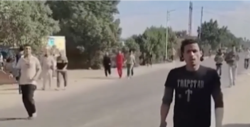US election 2020: How will early voting impact the election?
- 2020-10-24 14:43:10


 Pierre Rayer: Art, Science, and Happiness: The Universal Mission of Transmission to Future Generations through Patronage at the Louvre Abu Dhabi
Pierre Rayer: Art, Science, and Happiness: The Universal Mission of Transmission to Future Generations through Patronage at the Louvre Abu Dhabi Ahly crowned Super champions after dramatic extra-time win over Modern Future FC
Ahly crowned Super champions after dramatic extra-time win over Modern Future FC Yemeni Honey..A Development Wealth Threatened By Conflict And Climate Change
Yemeni Honey..A Development Wealth Threatened By Conflict And Climate Change California wildfires: Millions warned of possible power cut
California wildfires: Millions warned of possible power cut Central African rebels launch attacks near capital
Central African rebels launch attacks near capital Yemen's STC Confirms Death of Five Soldiers in Hadramout Attack
Yemen's STC Confirms Death of Five Soldiers in Hadramout Attack Arab League Denounces Israel’s Recognition of Somaliland
Arab League Denounces Israel’s Recognition of Somaliland Sudan Triumphs Over Equatorial Guinea in AFCON 2025
Sudan Triumphs Over Equatorial Guinea in AFCON 2025 Israeli Army Announces Withdrawal from Qabatiya in the West Bank
Israeli Army Announces Withdrawal from Qabatiya in the West Bank Mass Escape Reported from Adaman Psychiatric Hospital in Egypt
Mass Escape Reported from Adaman Psychiatric Hospital in Egypt
